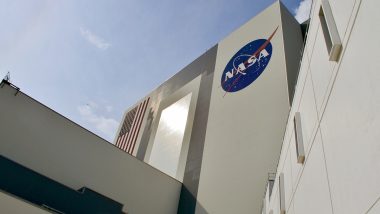Washington, April 7: Using two space-based studies, NASA has been observing climate change and groundwater loss across the planet.
Its Global Ecosystem Dynamics Investigation (GEDI) mission, ecosystem and climate researchers can quickly locate their regions of interest and study forest structure and carbon content with greater precision than in the past. GEDI is a high-resolution lidar instrument designed specifically to measure vegetation from the International Space Station (ISS). It rapidly bounces laser pulses off the trees and shrubs below to create detailed 3D maps of forests and land formations.
With its newest data product, GEDI mission provides the first near-global estimate of aboveground forest biomass and the carbon it stores - filling a key gap in climate research. The data enables research into how Earth's forests are changing, what role they play in mitigating climate change, and the regional and global impacts of planting and cutting down trees. NASA Telescope Lunar Spectral Irradiance Uses Moonlight To Enhance Accuracy of Satellites.
Over the past three years, GEDI has taken billions of laser measurements of vegetation around the globe. That data has been combined with airborne and ground-based lidar surveys to create detailed 3D biomass maps that indicate the total amount of vegetation in a one-square-kilometre area. With those maps, researchers will be able to better estimate the amount of carbon that is stored in forests.
"Resolving the structure of different forest and woodland ecosystems with much more certainty will benefit not only carbon stock estimation, but also our understanding of their ecological condition and the impact of different land management practices," said John Armston, GEDI's lead for validation and calibration and an associate research professor at the University of Maryland, in a statement.
Another is a joint project between NASA's Jet Propulsion Laboratory and the US Department of Energy's Lawrence Berkeley Laboratory, which used satellite data to develop a method of monitoring underground water loss - a serious matter for the agriculture industry, TechCrunch reported.
Researchers observed California's Tulare Basin with the US-European Gravity Recovery and Climate Experiment (GRACE) and GRACE Follow-On satellites and a European Space Agency (ESA) Sentinel-1 satellite.
The groundwater in the Tulare Basin is pumped to irrigate the state's Central Valley, a major agricultural centre in the US, and its supply is dwindling. The satellite data provided the team the context to develop a model that monitors the rate and type of water loss underground.
"The method sorts out how much underground water loss comes from aquifers confined in clay, which can be drained so dry that they will not recover, and how much comes from soil that's not confined in an aquifer, which can be replenished by a few years of normal rains," NASA wrote in a separate statement.
Even as the space agency looks to return to the moon, NASA has reiterated its commitment to Earth science missions with these studies.
(The above story first appeared on LatestLY on Apr 07, 2022 03:45 PM IST. For more news and updates on politics, world, sports, entertainment and lifestyle, log on to our website latestly.com).













 Quickly
Quickly


